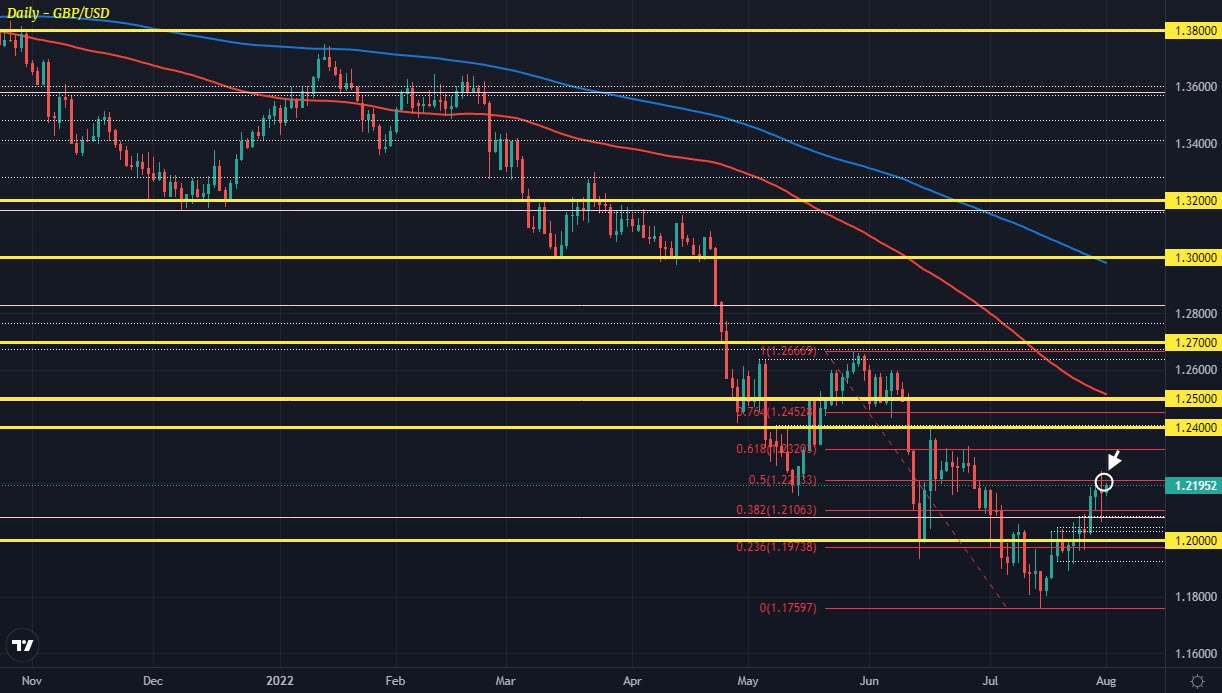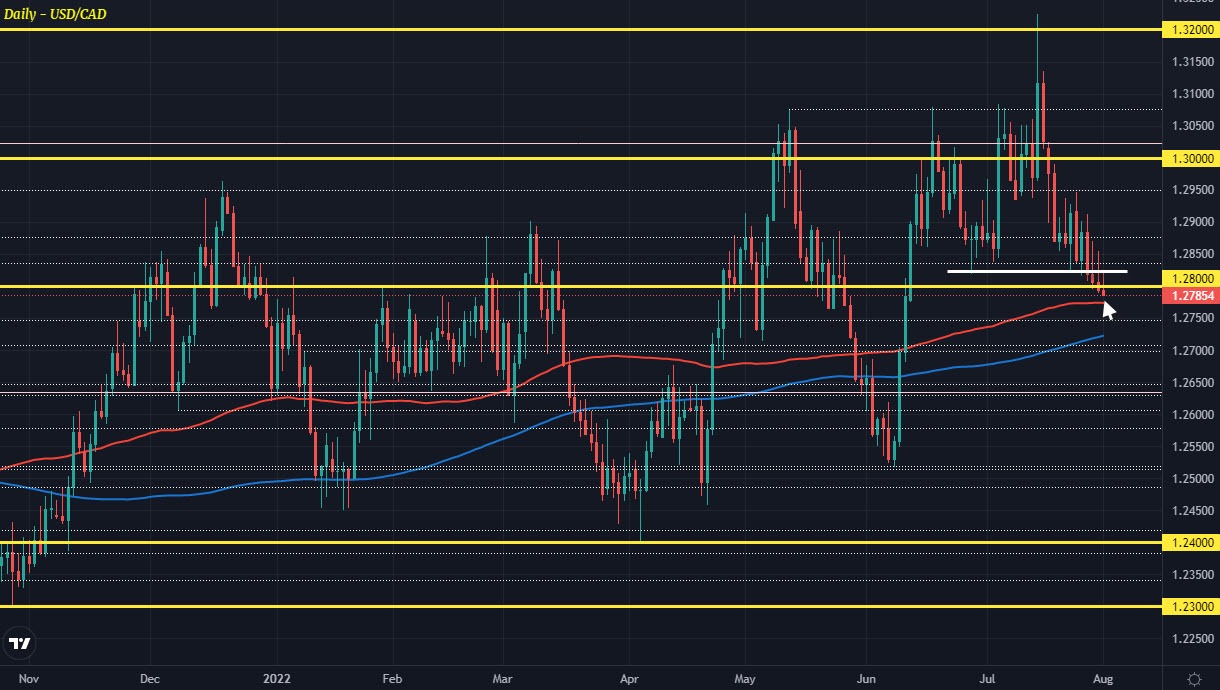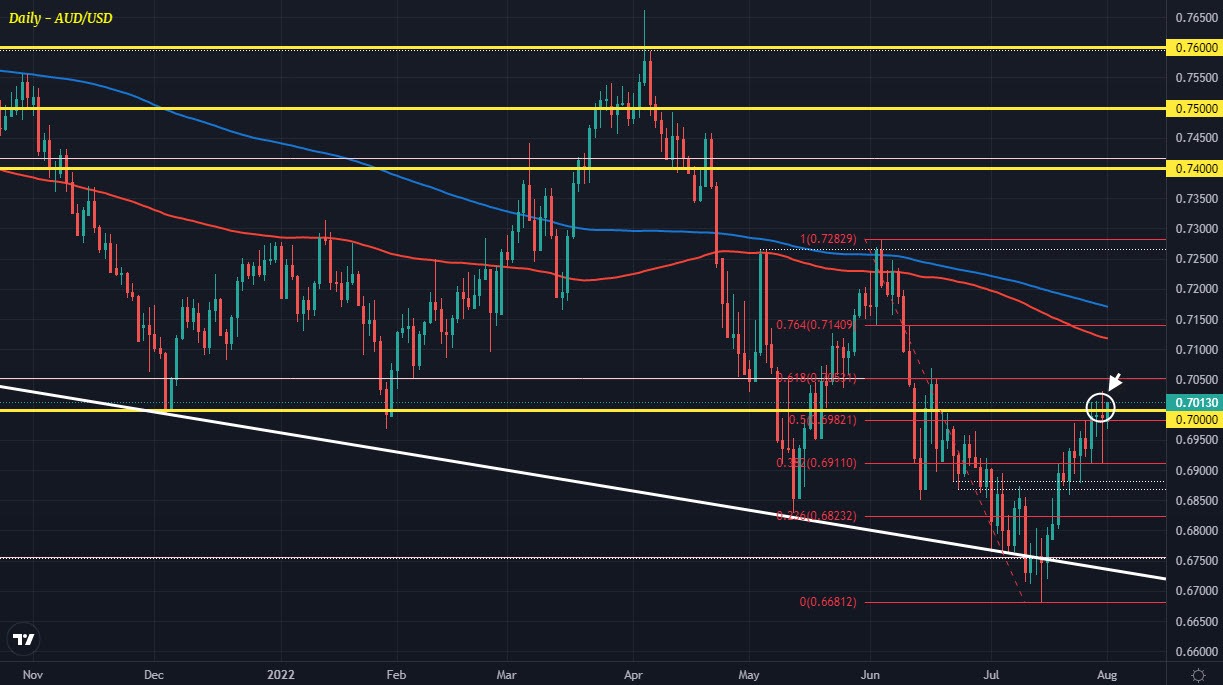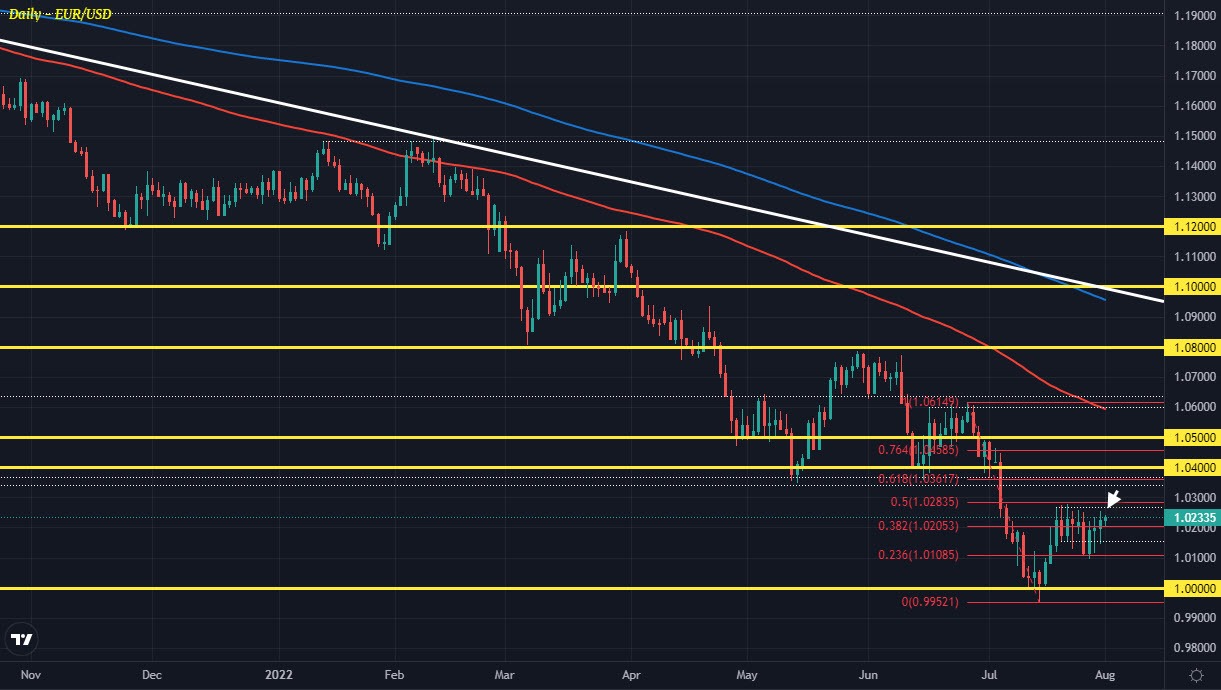The market is just slowly poking and prodding at key levels for the dollar since last week and we are seeing more of the same to start European morning trade once again. USD/JPY is a notable mover, with the pair down 0.7% to 132.30 currently, with the technicals suggesting a likely test of 132.00 on the daily chart with the 16 June low at 131.49 also in play. A better look for that can be found here.
As we start the session, the dollar is losing further ground against the rest of the major currencies bloc and we are seeing some key technical levels coming into play again. Here's a look at GBP/USD:

The pair continues to knock on the door of a firm break above 1.2200 with the 50.0 Fib retracement level adding to resistance at 1.2213 at the moment. That will remain a key level to watch this week and in terms of the daily close for the pair.
Meanwhile, USD/CAD is also testing waters below 1.2800 and inching towards a test of the 100-day moving average:

The key level (red line) stands at 1.2774 currently and will be a major one to watch as a break will open up the range towards testing the 200-day moving average (blue line) next at 1.2722 at the moment.
Then, we also have AUD/USD which is knocking on the door of the 0.7000 handle once again:

The pair is yet to secure a firm daily close above the key level and today will be another test of that as price is at the highs for the day at 0.7014 currently. A firm hold above 0.7000 will pave the way for a test of the 61.8 Fib retracement level at 0.7053 and the 16 June high at 0.7069. That will be the next key resistance region to watch on a break before the 100-day moving average (red line) comes into play.
One dollar pair that isn't quite contesting key technical levels is EUR/USD, which remains somewhat rangebound and consolidating between 1.0100 to 1.0300 for the most part:

The lack of appetite despite the dollar's sluggishness highlights the euro's own incapacities and the 50.0 Fib retracement level at 1.0283 remains a critical resistance point limiting any potential upside for the pair at the moment.



